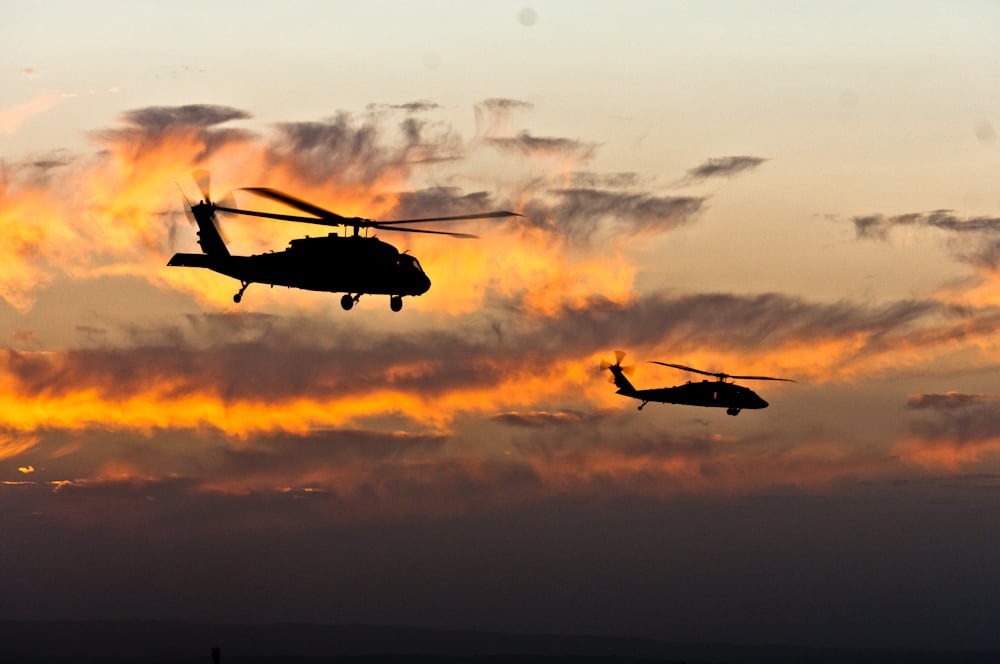Most soldiers see the final result of Army research when they get a new piece of gear, a better vehicle or more accurate munition.
Few of those in the ranks get a picture of the scientific advances, both large and small, that lead to things like better body armor, improved radio communications or more durable boots.
But each year, a host of researchers are plugging away in laboratories looking at everything from making better MREs to advanced lasers and night vision.
Here’s a list of this year’s top technology advancements, courtesy of the Army’s Research, Development and Engineering Command:
Atom ‘tickling’
One way to get energy out of an atom is through a nuclear reaction. But that can be a bit dicey, requiring vast amounts of equipment to contain the power released. Army researchers and their multinational partners found a new, safer way to conduct a controlled release of the same power.
By arranging electrons at specific speeds to be captured by atoms, this allows researchers a way to “tickle” their nuclei, which releases the energy.
While early in the research phase, the method has the potential to supply “thousands of times the energy of conventional batteries,” researchers said.
Humans teaching robots
The Army and other services look to autonomous systems and artificial intelligence to help extend the reach and capabilities of troops. As they do so, a mainstay of this is to keep humans in the loop.
To make the human-robot connection work, though, the AI must learn from the human so it knows what needs to be done. And not all soldiers can be coders.
"If we want these teams to be successful, we need new ways for humans to be able to quickly teach their autonomous teammates how to behave in new environments," said Dr. Garrett Warnell, a researcher at the lab and co-author of the papers.
So, Army researchers have developed new learning techniques for humans to train computers. A trained human instructor can use demonstrations, real-time intervention and real-time evaluative feedback. They use new algorithms called Deep TAMER and Cycle-of-Learning that can interpret the instructor’s lessons and quickly perform the new tasks.
A new explosive that’s safer but more powerful than dynamite
A new explosive known as BODN is 50 percent more powerful than TNT and it was developed by Army scientists at Aberdeen Proving Ground, Maryland.
Aged TNT can be quite unstable and explode from too much motion. BODN is stable and less susceptible to such problems.
BODN is non-toxic, an improvement over TNT. Both can be melted easily for use in artillery.
RELATED

Grasshopper jumping method applied to robots
Army-sponsored research has examined a variety of ways in which living things such as grasshoppers use stored energy, similar to how a bow or slingshot works, to jump faster and farther than might be expected for their size.
The design principles rely on elastic structures found in animals, plants and fungi to maximize energy. A practical application could one day include robots on the battlefield gathering intelligence without being noticed by jumping quickly from spot to spot.
New material could create Captain America shield-like protection
A new super strong copper and tantalum alloy can take extreme impact and temperature, a feature that makes it a good candidate for making projectiles or armor.
“Within these very small grains, we built in a microstructure that's even smaller than the grain size due to tantalum's nanoclusters,” said Dr. Kristopher Darling, a materials scientist with the lab’s Lightweight and Specialty Metals Branch. “This doubles the material's strength and stability, making it immune to the deformation response.”
They created nanocrystalline alloy that has grains arranged in the cluster, giving an added internal layer which allows the material to maintain “exceptionally high” levels of strength and stability.

‘Cool coating’ keeps dangerous sand particles off of helicopter rotor blades
A new coating provides a thermal barrier for helicopter rotors, causing sand particles to slip right off rather than sticking as they do now.
“We are facing, especially in Southwest Asia, and other places, brown-out conditions,” said Dr. Anindya Ghoshal, a scientist at the Army Research Lab’s Vehicle Technology Directorate. “We have a lot of dust particles that blow out, especially when you're hovering.”
The new coating means that blades survive longer and pilots have reduced brown-out problems.
Stronger X-ray vision may help make better engines
An experiment at Argonne National Laboratory Advanced Photo Source allowed researchers a first-ever peek at how fuel breaks up and ignites.
“We had a combustion going on, which was done for the first time ever at [Advanced Photon Source], and we imaged the spray breakup at the very tip of the injector using an X-Ray source,” said Dr. Tonghun Lee, associate professor in the Department of Mechanical Science and Engineering University of Illinois at Urbana-Champaign. “Typically, that region where the liquid breaks up is very dense and it’s difficult to image anything inside there.”
The imaging will help improve engine designs to help with alternative fuel use and make more powerful and efficient engines.
Super-sensitive antenna could give soldiers better sensors in smaller packages
By putting atoms into quantum states, researchers made a quantum antenna that picks up signals and puts out less background noise. The quantum antenna works faster than a similar-sized traditional antenna.
With an equally capable receiver, soldiers could see miniaturized technology that would reduce the radio size and signature for their field communications.
Todd South has written about crime, courts, government and the military for multiple publications since 2004 and was named a 2014 Pulitzer finalist for a co-written project on witness intimidation. Todd is a Marine veteran of the Iraq War.




